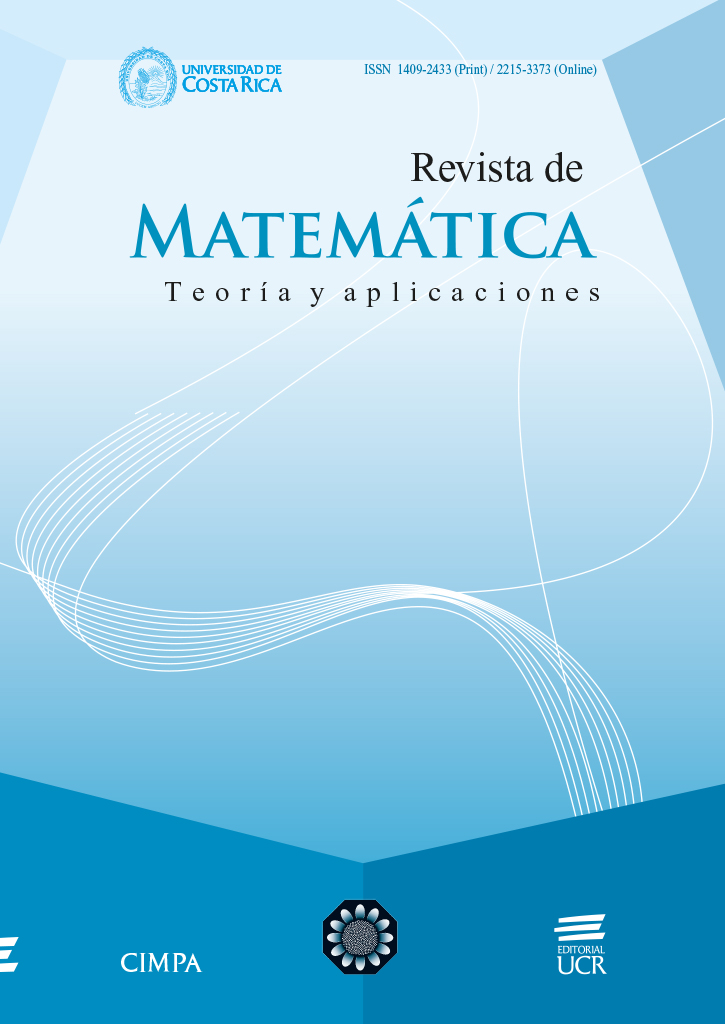Resumen
A pesar de su uso generalizado en técnicas analíticas y numéricas avanzadas, los métodos de campo de gradientes suelen estar subrepresentados en la formación básica de economistas y científicos sociales. A medida que el aprendizaje automático y los enfoques analíticos y numéricos sofisticados ganan terreno, la importancia de los métodos de gradiente en los procesos de optimización se vuelve cada vez más evidente. Esta falta en las herramientas académicas y prácticas es subóptima. Este artículo tiene como objetivo abordar esta brecha introduciendo los métodos de campo de gradientes tanto de manera intuitiva como rigurosa, situándolos en el contexto de problemas comúnmente encontrados por economistas y científicos sociales, con un enfoque particular en la optimización con restricciones de igualdad.
Citas
S. Athey, The Impact of Machine Learning on Economics. The Economics of Artificial Intelligence: An Agenda. University of Chicago Press, 2019, 507–547. doi: 10.7208/chicago/9780226613475.003.0021
S. Athey, G.W. Imbens, Machine Learning Methods That Economists Should Know About. Annual Review of Economics 11(2019), 685–725. doi: 10.1146/ annurev-economics-080217-053433
A. Belloni, V. Chernozhukov, C. Hansen, High-dimensional methods and inference on structural and treatment effects. Journal of Economic Perspectives 28(2014), no. 2, 29–50. doi: 10.1257/jep.28.2.29
D. Bertsekas, Nonlinear Programming. Athena scientific optimization and computation series. Athena Scientific, 2016. doi: 10 . 1057 / palgrave . jors .2600425
C. Bishop, Pattern Recognition and Machine Learning. Information Science and Statistics. Springer New York, 2016.
J. Bonnans, J. Gilbert, C. Lemarechal, C. Sagastizábal, Numerical Optimization: Theoretical and Practical Aspects. Universitext. Springer Berlin Heidelberg, 2013. doi: 10.1007/978-3-540-35447-5
S. Boyd, L. Vandenberghe, Convex Optimization. Cambridge University Press, 2004. doi: 10.1017/CBO9780511804441
V. Chernozhukov et al., Double/debiased machine learning for treatment and structural parameters. The Econometrics Journal 21(2018), no. 1, C1–C68. doi: 10.1111/ectj.12097
A. Chiang, K.Wainwright, Fundamental Methods of Mathematical Economics. McGraw-Hill international edition. McGraw-Hill Education, 2005.
J. Duchi, E. Hazan, Y. Singer, Adaptive Subgradient Methods for Online Learning and Stochastic Optimization. Journal of Machine Learning Research 12(2011), no. 61, 2121–2159.
I. Goodfellow, Y. Bengio, A. Courville, Deep Learning. Adaptive Computation and Machine Learning series. MIT Press, 2016. doi: 10.1007/s10710-017-9314-z
J. Grimmer, M. E. Roberts, B. M. Stewart, Machine learning for social science: An agnostic approach. Annual Review of Political Science 24(2021), 395–419. doi: 10.1146/annurev-polisci-053119-015921
M. Hoy et al., Mathematics for Economics, third edition. The MIT Press. MIT Press, 2011.
W. Karush, Minima of Functions of Several Variables with Inequalities as Side Conditions. G. Giorgi, T. H. Kjeldsen (Eds.). Traces and Emergence of Nonlinear Programming. Springer Basel, Basel, 2014, 217–245. doi: 10.1007/978-3-0348-0439-4 10
D. P. Kingma, J. Ba, Adam: A method for stochastic optimization. arXiv preprint arXiv:1412.6980 (2014). doi: 10.48550/arXiv.1412.6980
J. Kleinberg, J. Ludwig, S. Mullainathan, C. R. Sunstein, Discrimination in the Age of Algorithms. Journal of Legal Analysis 10(2019), 113–174. doi:10.1093/jla/laz001
H. Kuhn, A. Tucker, Nonlinear Programming Proceedings of the Second Berkeley Symposium on Mathematical Statistics and Probability. 1951.
R. P. Masini, M. C. Medeiros, E. F. Mendes, Machine learning advances for time series forecasting. Journal of economic surveys 37(2023), no. 1, 76–111. doi: 10.1111/joes.12429
S. Mullainathan, J. Spiess, Machine learning: an applied econometric approach. Journal of Economic Perspectives 31(2017), no. 2, 87–106. doi: 10.1257/jep.31.2.87
J. Nocedal, S.Wright, Numerical Optimization. Springer Series in Operations Research and Financial Engineering. Springer New York, 2006. doi: 10.1007/b98874
S. Noy, W. Zhang, Experimental evidence on the productivity effects of generative artificial intelligence. Science 381(2023), no. 6654, 187–192. doi: 10.2139/ssrn.4375283
D. Rolnick et al., Tackling climate change with machine learning. ACM Computing Surveys (CSUR) 55(2022), no. 2, 1–96. doi: 10 . 1145 / 3485128
S. Ruder, An overview of gradient descent optimization algorithms. arXiv preprint arXiv:1609.04747 (2016). doi: 10.48550/arXiv.1609.04747
C. Simon, L. Blume, Mathematics for Economists. Norton, 1994.
H. R. Varian, Big data: New tricks for econometrics. Journal of economic perspectives 28(2014), no. 2, 3–28. doi: 10.1257/jep.28.2.3
##plugins.facebook.comentarios##

Esta obra está bajo una licencia internacional Creative Commons Atribución-NoComercial-CompartirIgual 4.0.
Derechos de autor 2024 Sergio Pernice

